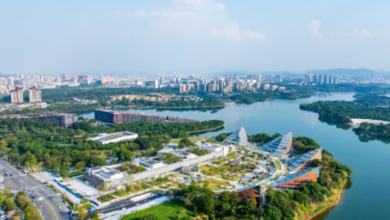Population of Dongguan: Insights by Gender and Growth

Demographic Analysis of Dongguan: Gender Distribution and Population Growth Trends
As one of China’s most dynamic manufacturing and economic hubs, Dongguan has experienced significant demographic changes over the past decades. This article examines the city’s population structure, with a focus on gender distribution and growth trends based on recent data.
Current Population Overview
Dongguan’s permanent population reached 10.47 million in 2022, making it one of Guangdong Province’s most populous cities. Unlike many Chinese cities with aging populations, Dongguan maintains a relatively young demographic profile due to its large migrant workforce. Approximately 70% of residents are classified as temporary migrants, primarily working in manufacturing, trade, and services.
Gender Imbalance: A Persistent Trend
Dongguan has long exhibited a gender ratio skew, with more males than females. Official statistics indicate a male-to-female ratio of around 118:100, higher than the national average (104:100). This disparity stems from:
- Industrial labor demand: Factories traditionally recruit more male workers for physically intensive jobs.
- Migrant workforce composition: Many female workers leave after short-term employment, while men tend to stay longer.
- Historical migration patterns: Earlier economic policies prioritized male-dominated industries like construction and electronics manufacturing.
However, recent years show a gradual balancing trend, with more women entering the service and tech sectors.
Population Growth: Slowdown After Rapid Expansion
Dongguan’s population surged during China’s economic boom (1990s–2010s), but growth has slowed due to:
- Industrial upgrading: Automation reduces low-skilled labor demand.
- Rising living costs: Housing and education expenses discourage long-term settlement for migrant workers.
- Policy shifts: Stricter residency (hukou) rules and competition from other cities affect migration rates.
Despite this, Dongguan remains attractive to younger workers due to its strong job market and proximity to Shenzhen and Guangzhou.
Future Projections
By 2030, Dongguan’s population is expected to stabilize between 10.5–11 million, with potential improvements in gender balance as the economy diversifies. Key factors influencing future trends include:
- Tech sector growth: Could attract more high-skilled workers, including women.
- Urbanization policies: May encourage permanent residency among migrants.
- Aging population: Like much of China, Dongguan will eventually face demographic aging, but later than other cities due to its migrant-heavy structure.
Conclusion
Dongguan’s demographics reflect its industrial past and evolving economy. While gender imbalance persists, economic diversification and urbanization may lead to gradual equilibrium. Policymakers must address labor retention and social services to sustain growth in this vital Guangdong city.





